Why a flip up motorcycle helmet is the real adventure helmet
Published on: 29 August 2024
CLICK ADVENTURE HELMETS AND FLIP-UP HELMETS TO SHOP WITH FREE UK NEXT DAY DELIVERY
Nobody doubts the fact that, right now, all the growth in motorcycling is coming from the adventure sector, and the reasons for this are manifold.
The adventure bike is the bike that can do anything. You can commute on an adventure bike; in fact, there's probably no better kind of bike for the job. A modern adventure bike is a lot of fun if you just want to go out for a quick blast at the weekend. And, of course, if you have ambitions to travel further afield, there's no bike more capable of covering the ground, more comfortable to be in the saddle of, or more able to cope with a mix of terrains.
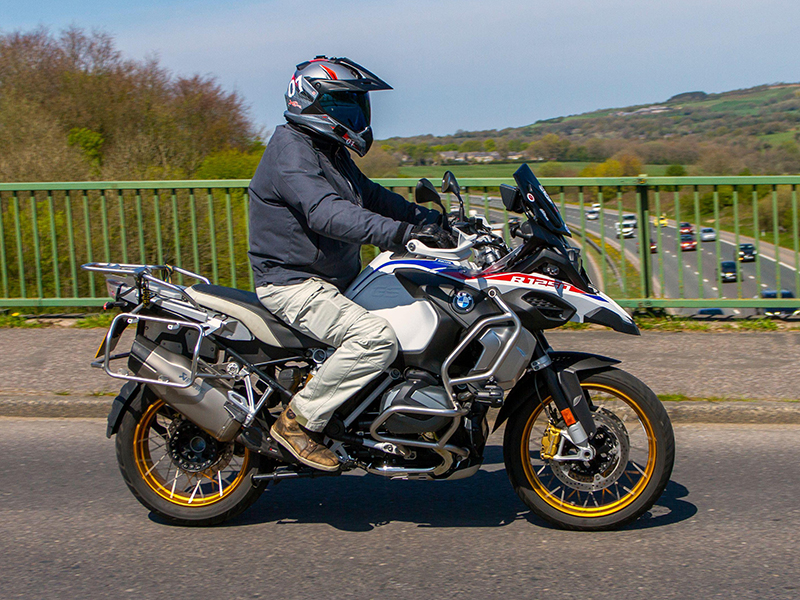
These days, it is a near-daily occurrence here in the shop for somebody to announce that they have just gotten rid of something like a Panigale in favour of something like a GS; and that they therefore need new kit, top to bottom.
And we're probably as well placed as anybody to help with this request. Some will have come to the conclusion that what they need is a laminated, adventure suit. And if the bike is going to be used largely for commuting, we would probably agree. But if proper 'adventures' loom on the horizon, we might advise on the benefits of a suit where the membrane was removable, because if you're riding anywhere in the extreme heat, then the last thing you want anywhere near your body is a waterproof membrane. You'll simply boil.
There are boots and gloves to be considered, obviously, but the fact about which most new adventure bikers are convinced is that they need a helmet with a peak.
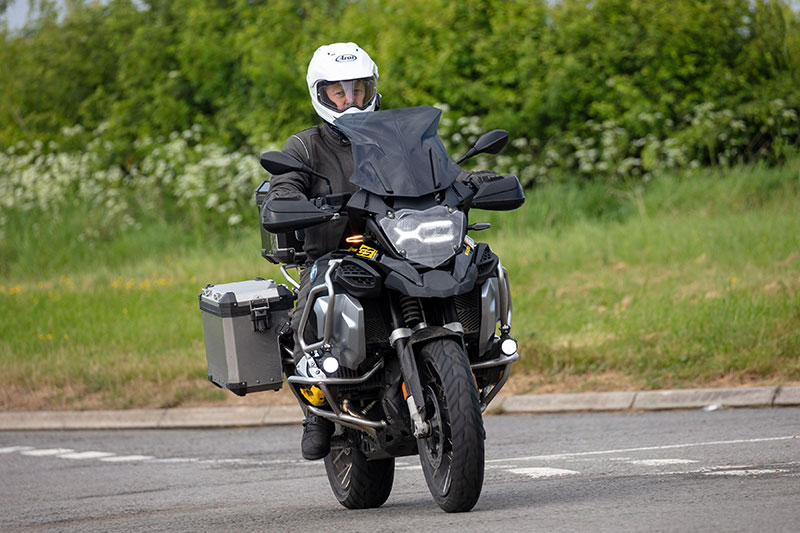
Now the truth is that every genre of motorcycling is imbued with its own styling cues. If you've got a sportsbike, you will want a one-piece leather suit with an aero hump and knee sliders. If you've gone custom/retro there will normally be thoughts of a riding shirt, an open-face helmet, some Red Wing boots perhaps, and a pair of motorcycle jeans that end halfway up your calves. And there is absolutely nothing unusual in people wanting to look the part; to dress in a way that is in keeping with the kind of bike that they have decided to ride. We all do it.
Of course, we know why so many people believe they need a peak on their helmet. It's all tied in with the romance of adventure, and the notion that by inclining your head you can reduce the glare of the sun. And indeed if you do one day find yourself in the Serengeti as the sun is about to set across the savanna, then a peak might come in handy to block the orb's blinding aura.
The reality for most adventure bike riders, however, is that a peak on a helmet is just a fashion accessory.
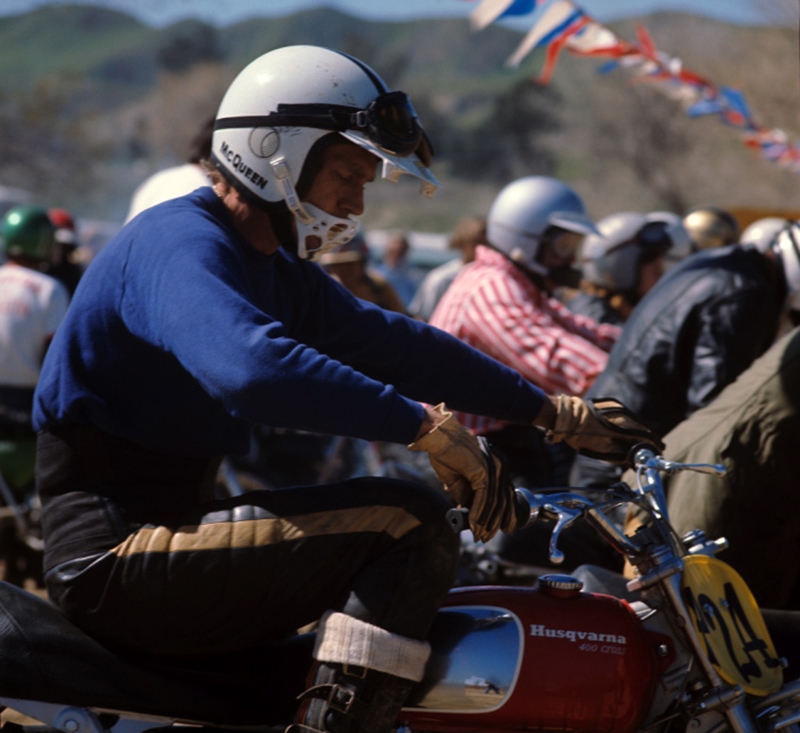
A peaked helmet
In the very early days, the fitting of a peak to a motorcycle helmet had nothing to do with the blocking out of the sun. It was introduced by those who rode scrambler-style bikes back in the seventies; and its primary purpose was to deflect the mud and the stones that were sent skyward by the rear tyre of the bike in front. Yet it cannot be denied that a peak did become a useful accessory for those who raced the big rallies like the Paris Dakar and the Baja 1000.
But for those who do most of their riding on the road, a peak is actually more often an irritant than a convenience.
The problem is that, however well designed, a peak will always disturb the air as it passes over the top of the helmet. Impede this smooth flow of air, and you will increase buffeting, instability and noise. Ultimately, this is distracting and tiring. And so all of these factors will detract from our ability to ride safely over long distances.

Now, we are all capable of coming up with what many of us would term 'facts', to justify the decisions we make. This, after all, is what sits at the heart of 'cognitive dissonance' theory; namely that people tell themselves little lies in their search for some consistency between their desires and their behaviours.
And so what we hear a lot in the shop is people justifying their wish for a helmet with a peak. And what people talk about most is the ability of a peak to cut out the blinding effects of a low-sitting sun. And we would not deny that a peak can be useful in this regard. Turn east or west directly into the sun, at the wrong time of day, and you can be temporarily blinded. And on a motorbike that can be dangerous.
It's a problem that is made more acute by dint of the fact that most, (most but not all), adventure helmets are not equipped with a sun visor. In many situations, that glare would be much reduced by flipping down a helmet's internal sun visor. Yet even a sun visor, it has to be acknowledged, will not always block out the sun. Raising your hand in front of the visor will temporarily do what a peak does. But there is another way.
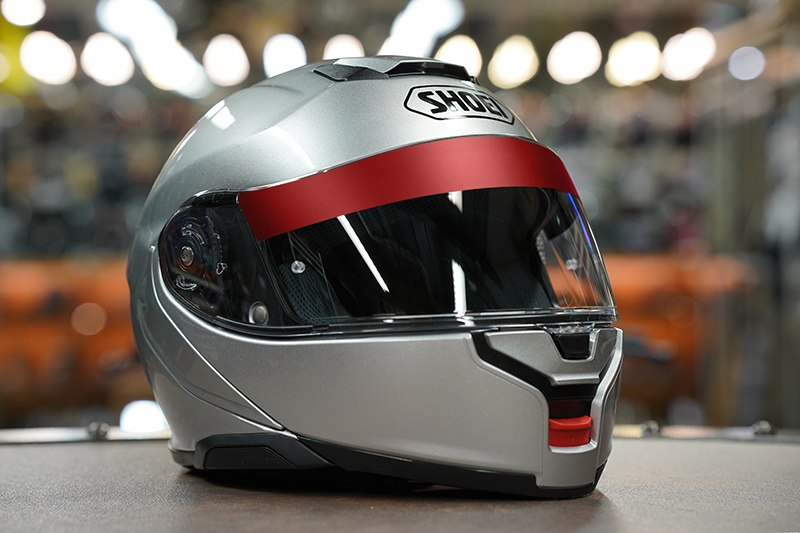
Run a thin strip of tape along the top of the external visor. Incline your head forward, and it will do exactly what a peak does. This is, after all, how racers have always adorned their helmets, in situations where speeds made peaks simply unwearable.
And before anybody jumps up and down about a strip of tape reducing the field of vision, a peak on a helmet will do exactly the same. Even in the 'dead ahead' position, a peak will intrude on the visor.
The way we see it, there is nothing wrong with trying to look the part. We all do it, both in the way we dress, and in the way we prepare our bikes. I, for example, will often wear a wax cotton jacket purely on style grounds, even though I have access to jackets that, in almost every eventuality, would be far more practical. Whilst my BMW RnineT is shod with ridiculous Continental TKC80 tyres, even though I will never take the bike off road.
And so we have no issue with a bit of 'dressing up', but there is a case for understanding the compromises that are implicit when we ride, for example, in a peaked helmet.
Simply put, ride with a peak, and there's a good chance that buffeting will become an issue at speed. And almost certainly you will be adding more noise into the equation.
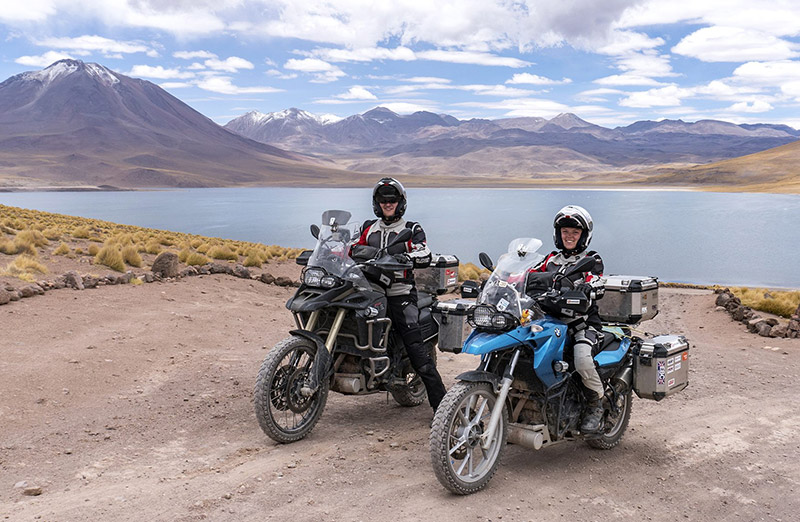
The advantages of a flip-lid
So often when I come across what I would call proper adventure riders, those who ride huge distances, and who find themselves in far-flung corners of the world, I note that they are riding in flip-lid helmets rather than what is traditionally known as an adventure helmet.
And to me this seems totally logical. It's certainly what I would wear were I lucky enough to get out of the shop for long enough to circumnavigate the globe. The advantages are many; the disadvantages are few.
The main obstacle when it comes to considering a flip-lid helmet, of course, is prejudice.
Now, because I was one of them, I am a particularly aware that a lot of 'old-school' bikers do not like flip-lid helmets. It's an historical thing. If you were a biker back in the eighties or nineties, the chances were that you rode a sportsbike. You wore an Arai, or sometimes a Shoei helmet. But what you would never have worn was a flip-lid helmet. Only two kinds of biker wore flip helmets back then. The Old Bill. And old farts on BMWs. And the truth is that you held both in equal contempt. Of course, ironically, it is many of those very same bikers who now ride adventure bikes, having realised that their backs can no longer cope with the pain of a sportsbike. But often for bikers of this generation a flip-lid is still pure anathema.
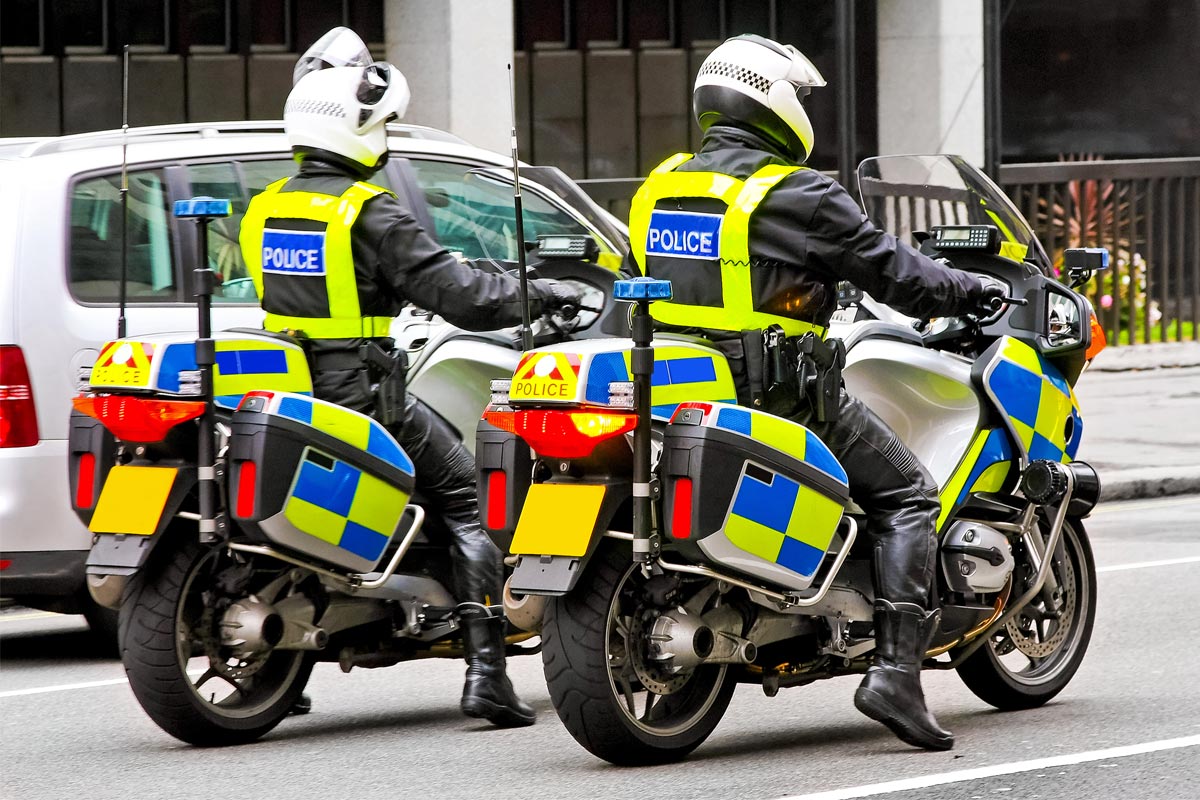
And this is perhaps a shame because, in so many ways, a flip lid is the perfect helmet for the adventure-minded rider.
A flip is simply the best helmet to wear if you're riding anywhere hot. And that's because, when necessary, it can offer the air-flow advantages of an open-face helmet. Nobody would advocate riding at speed with the chin bar raised. Actually, on any modern flip that is technically allowed, but a traditional flip is not designed to be worn at speed in its open configuration. It will deliver the aerodynamic properties of a London bus, and of course if it all goes wrong, your chin, and indeed your entire face, is on the line. But raising the chin bar to get some cool air onto your face in hot conditions when you are moving at a slow speed is both safe and, at times, blindingly necessary..
But with a modern, flip-helmet it's not as though anybody will know that you're not wearing a full-face helmet. Fasten the chin bar, and I would defy all but the most ardent of motorcycle gear geeks to know that you were riding in a flip.
There is, though, one significant and indisputable, safety advantage with a flip. And it is the ability for 'first responders' to reach a rider's airways. You have an accident. You are lying by the side of the road. If you are wearing a full-face helmet it will take the ministrations of two, properly-trained people to remove your helmet. No medic will remove your helmet if they're on their own. The liability issues are too great. Meanwhile nobody knows if you have swallowed your tongue, and can't breathe.
If you are wearing a flip-lid, the first person on the scene can lift the chin bar. They can talk to you, ascertain what state you're in and, if necessary, administer mouth-to-mouth. There's nothing here that's subject to speculation; in certain circumstances a flip-lid could save your life.

In contrast to most adventure helmets, most flip-lids also tend to come equipped with a drop-down, sun visor which will in most circumstances do a similar job to a peak. But for us the most compelling benefit for those who like to cover big miles is the fact that a good-quality flip is the quietest helmet you can ride in. I say 'good-quality' because a cheap, flip helmet will be just as noisy as any cheap helmet.
Now, the way we put on a flip helmet allows it to be made quieter. Let me explain. A full-face helmet has to have a large hole in its underside in order to allow the rider to get his 'big 'ole' head into it. But with a flip helmet, you pull the sides apart. You pull it down over your head, and then the sides of the helmet flex back to the neck. As a result of this when the chin bar is locked in position the hole is much smaller than the hole in the underside of a full face. A smaller aperture means less air can enter the helmet, and make its way to your ears. And less air reaching the ears equates to less noise.
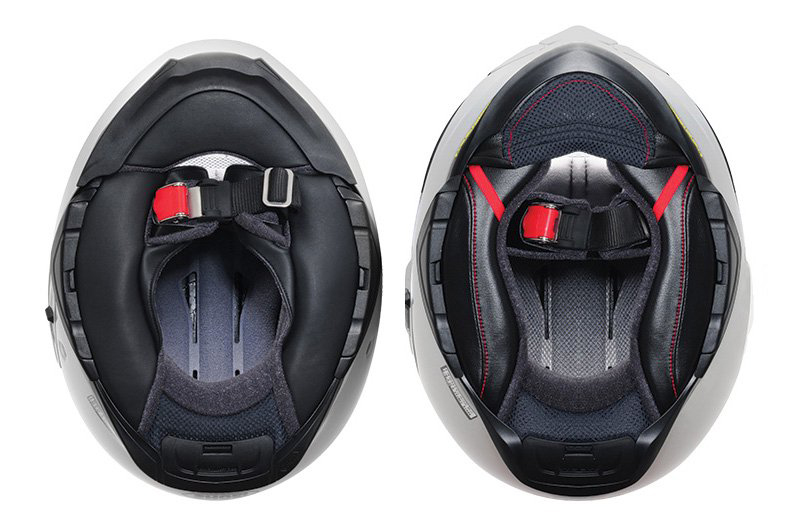
This is best demonstrated by comparing the undersides of the Shoei GT-Air 3 and the Shoei Neotec 3. These helmets are identical, except for the fact that the former is a full-face helmet, the latter is a flip. As you can see, the aperture on the Neotec is much smaller. It therefore has a much tighter neck roll. A helmet with a tighter neck roll is a helmet that is less noisy. And if you're on a long adventure, a quieter helmet has got to be a good thing. Surely?
There is one other observation I would make with regard to noise. Adventure helmets are actually noisier than full-face helmets. And that's because of their protruding chin profile; this again will allow more air into the helmet. In other words, don't buy an adventure helmet if you value quiet!
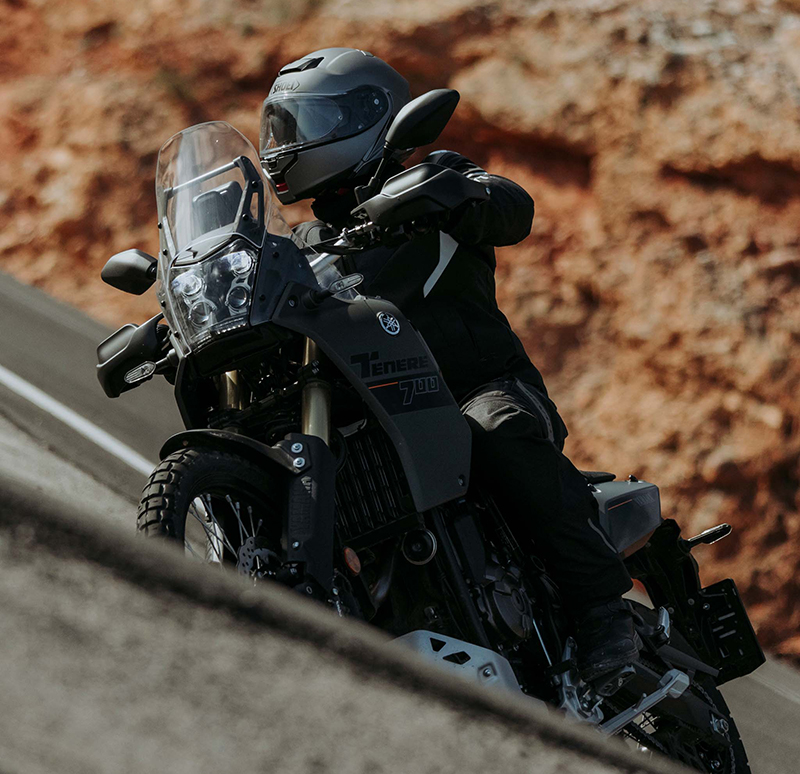
In summary
Obviously, we understand why adventure bike owners want to ride in a helmet with a peak. After all, this is what everyone knows to be an adventure helmet. And whenever you see an advertisement, a Facebook post or a YouTube video for an adventure bike, the rider will be wearing a helmet with a peak. And so if you are wanting to adopt an 'adventure rider' aesthetic, you may well feel obliged to ride in a helmet with a peak. Indeed, even I have an Arai Tour-X5 to go with my self-styled, RnineT scrambler.
But if you do big miles on your adventure bike on the black stuff, if you like the idea of protecting your ears, if you don't want a helmet that gets buffeted by the wind, and if you want to stay cool when the going gets really hot, then you'd be better off with a flip helmet than with what is commonly known as an 'adventure' helmet.
And that's why, in our opinion, a proper adventure helmet will have a lift-up chin bar. And not a peak!
You can buy flip-up helmets or adventure helmets with free next day UK delivery online, or visit our store in Guildford to try it one on.
Share this story
































































